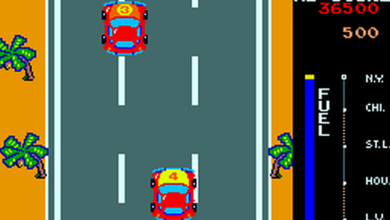By the early 1990s Sega and Nintendo were clearly established as the big hitters in home consoles but it didn’t stop anyone and everyone trying to get in on the act and 1991 saw Philips re-enter the fray with their ill-fated CD-i.
Released in North America – December 3rd 1991 Released in EU – 1992
Article by Stuart Latarche – follow him on Twitter: http://twitter.com/2BH_Music
Philips, a household electronics name known the world over for years, decided that 1991 would be their year for breaking the home console market. They had enjoyed some success with the Videopac in Europe in 1983 but nothing since then.
CDI Commercial Video:
With the Mega Drive having been out for a few years already, the Mega CD nearly a year away for North America, the SNES yet to be released and the 1991 Consumer Electronics Show announcement that they, not Sony, would be teaming up with Nintendo for the SNES CD, they can be forgiven for thinking they had a shot.
With a number of incarnations (both for home and business markets) the most encountered CD-i consoles in the home were the 200 and 400 series.
Looks-wise the 200 series was never going to win any prizes, looking more like a VHS player than a games console but then the 400 series whilst looking the part with a much sleeker look, couldn’t hide the glaring flaws: that the CD-i didn’t really know what it wanted to be. It had models that had an integrated mini-stereo (the FW380i) and even a television that had a built in CD-i (the 21TCDi30).
But even with the many, many different frankenstein-esque types of CD-i and controllers, the most obvious place to see its indecision was its software library. Looking back on the CD-i backlist now it’s easy to see that Philips really didn’t know what they had, what they wanted it to be or who they wanted to have it. Was it a way to watch movies? Was it a cheaper alternative to a home PC? Was it a games console? Why not try to make it all of them? Well, that last option seems to be the one Philips took.
A jack of all trades of home entertainment but master of none.
The first releases didn’t really do the console any favours, limited to only a handful of games such as Battleship, Connect Four, Pinball and Sargon Chess which were all seeming more like in built games you’d find in any home PC of the era and none of which could be considered a good launch title.
As the years went on the list of titles available didn’t really get much better despite Philips really pushing the console in 1993 but that year just seemed to bring VCDs and more educational titles to its repertoire. But then in in the same year there was an air of anticipation about the news of a Nintendo licensed game (courtesy of the aforementioned SNES CD partnership) coming to the CD-i; Link: The Faces of Evil could easily be thought of at the time as the game that could save the floundering console.
However, in true CD-i fashion it did nothing of the sort and if anything just deepened the dislike towards the console even more. Link may well be a favourite character in the Nintendo past, present and I’m sure future, but the fact that many fans refuse to acknowledge the CD-i release as part of Link’s history just goes on to show how poor it was. The fact that 2 further Link games were released on it is baffling and more baffling still is the fact that these games can be seen to sell for in the region of £30-75 on eBay – maybe that’s just the Link fans looking to destroy all evidence of the games.
1993 however did bring one particular favourite to the system, one that still holds an audience today: The 7th Guest. Also released on PC this game really offered a good puzzle game experience interspersed with live action video clips which really enhanced the atmosphere. Many a CD-i title tried to include live action video in their gameplay, but none (aside from Burn Cycle) could live up to the 7th Guest and many seemed to just incorporate them for the sake of it. The 7th Guest however is a game I have fond memories of, such as my parents staying up playing until the early hours after saying “Just one more puzzle!” about 5 times a night and is one of only two reasons I bought a CD-i again recently, despite the fact I could have just got it on Steam, but where’s the experience with that?
With the competition starting to come back to the arena, Philips seemed to panic and 1993 – 1996 saw more VCDs released than games with Burn Cycle the only real game of any note to be released in 1994 and Myst being released in 1996. By this point though it was too late.
With Sony Playstation , Sega Saturn and others also offering Myst and far better gaming titles the end of the road was in sight. Whilst not officially ceasing to sell until 1998 Philips had clearly given up, with only a few minor titles released post 1996.
Though the CD-i had sold around 1 million units this foray into the gaming market had reportedly lost Philips in the region of 1 billion dollars and would be the reason they gave up on the gaming market. Coming up next: CD-i game highs and lows.
Article by Stuart Latarche
Follow him on Twitter: http://twitter.com/2BH_Music





![RetroArch Starter Guide [2025] RetroArch Starter Guide [2025]](https://i.ytimg.com/vi/PwJEIYZXLgw/maxresdefault.jpg)

